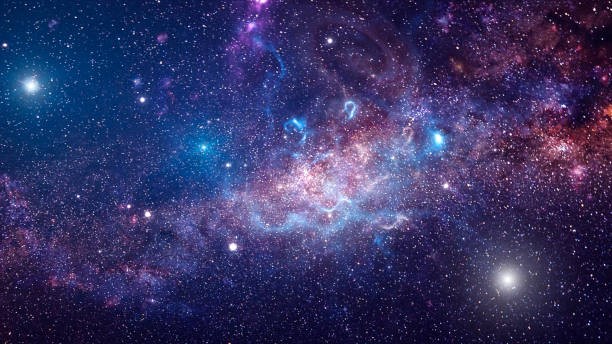Description

Copyright infringement not intended
Context: The James Webb Space Telescope (JWST) has made a remarkable discovery: the CH3+ molecule, also known as methyl cation or Methylium. This is the first time that this simple organic molecule has been detected outside our solar system.
Details
- Life on Earth, and possibly elsewhere, is based on carbon. Carbon atoms can form bonds with hydrogen and other elements, creating a variety of organic molecules. Some of these molecules are essential for life, such as amino acids, the building blocks of proteins. But how did these complex organic molecules form from simpler ones?
- One possible way is through reactions involving CH3+. This molecule consists of one carbon atom and three hydrogen atoms, and it is very reactive. It can combine with other molecules to form larger and more complex ones.
- By finding CH3+ in space, we have evidence that the basic ingredients for life are present in the interstellar medium, the vast space between stars. And not just in any place, but in a disk of dust and gas around a young star, where planets may be forming.
Methylium
- Methylium is one of the simplest organic molecules, consisting of one carbon atom and three hydrogen atoms.
- It is highly reactive and unstable, and it can only exist in very low-density environments, such as the cold and dark regions between the stars. It is also a key precursor for more complex organic molecules, such as methanol, which are essential for life as we know it.
- The JWST detected Methylium using its Near-Infrared Spectrograph (NIRSpec), which can measure the spectra of faint objects with high precision and sensitivity. The NIRSpec observed the emission lines of Methylium in several star-forming regions, such as Orion and Taurus.
- The team of astronomers who made the discovery analyzed the data and estimated the abundance, temperature, and velocity of Methylium in these regions.

How did we find it?
- The JWST is a powerful telescope that can observe infrared light from distant objects. Infrared light is invisible to our eyes, but it carries a lot of information about the chemical composition of those objects.
- Every molecule has a unique signature in infrared light, like a fingerprint. By analyzing the spectrum of light from an object, we can identify what molecules are there.
- The JWST observed a disk of dust and gas around a young star in the Orion Nebula, a star-forming region 1,350 light years away from us. The Orion Nebula is one of the brightest nebulae in the night sky, and you can see it with your naked eye as a fuzzy spot below Orion's belt.
- When astronomers looked at the spectrum of this disk, they noticed something unusual: a series of lines that matched the fingerprint of CH3+. They confirmed this with the help of Schlemmer's lab, which studied the spectrum of CH3+ in detail.
Significance
- It confirms the theoretical predictions that Methylium can form in interstellar space through ion-molecule reactions.
- It provides new insights into the chemical evolution of organic molecules in different environments.
- It opens up new possibilities for studying the physical conditions and dynamics of star-forming regions, such as turbulence, shocks, and magnetic fields.
The JWST is a powerful tool for exploring the mysteries of the cosmos, and this is just one example of its amazing capabilities. The JWST will continue to observe Methylium and other molecules in interstellar space and reveal new aspects of our cosmic origins and destiny.

James Webb Space Telescope (JWST)
- The James Webb Space Telescope (JWST) is a marvel of engineering and science that will revolutionize our understanding of the universe. It is the result of collaboration between NASA, ESA, and CSA, and it was launched in December 2021.
- It is now orbiting a special point in space called the Sun-Earth L2 Lagrange point, which is about 1.5 million km away from Earth in the opposite direction of the Sun. This location provides a stable and cold environment for the telescope to operate.
- It is the largest and most powerful infrared space telescope ever built. It has a 6.5-meter primary mirror that can collect more light than any previous infrared telescope. It also has four sophisticated instruments that can observe the universe in unprecedented detail and sensitivity.
- It is the successor to the Hubble Space Telescope, but it can see much farther and deeper into the cosmos.
- It can see backwards in time to just after the Big Bang when the first stars and galaxies were forming out of the primordial darkness. By observing these ancient objects, the JWST will reveal how the universe evolved over billions of years. The JWST will also compare the earliest galaxies to the ones we see today, and study how they grew and changed over time.
- It will also explore the birthplaces of stars and planets, and examine their physical and chemical properties. It will even look for signs of life in the atmospheres of planets around other stars.
The JWST has four main scientific objectives
- To trace the history of galaxy formation from the first luminous sources to modern-day galaxies.
- To understand how stars are born and how planetary systems develop.
- To study the physical and chemical properties of planetary systems, including our own Solar System.
- To investigate the potential for life in the universe by examining the atmospheres of exoplanets.
The JWST is a groundbreaking mission that will open new windows into the cosmos and answer some of the most fundamental questions about our origins and destiny.
https://indianexpress.com/article/explained/explained-sci-tech/detecting-carbon-molecules-space-jwst-8699417/#:~:text=Life%20as%20we%20know%20it,2023%2C%20in%20the%20journal%20Nature.












